Norwich Castle
|
A magnificent 12th century castle overlooking the fine city of Norwich |
|
An Introduction to Norwich Castle
|
Norwich Castle, a dual-purpose fortress and royal residence, was built for William the Conqueror in the 12th century. Hillsides were steeped, walls erected, and roughly 100 inconveniently placed houses were cleared out of the way to make room. The work was continued by William's successors, who never actually did live here. Their creation spent half a millenium as a prison, but since 1894 it's been arguably the most important museum in East Anglia. Its exhibits don't just cover the castle's own history, but the wider and older history of the whole continent. |
Different types of stone were used in the construction of Norwich Castle; some brought in from Caen in Normandy, others from Northamptonshire, while parts were sourced locally. This fine castle boasted a deep well, numerous battlements and a moat. Internally, Norwich Castle was equally impressive. To the north was the Great Hall, housing four magnificent windows along its north wall, and was where the day’s business, feasts and entertaining took place. The royal quarters, on the south side, comprised a large parlour, bedrooms and a private chapel. |
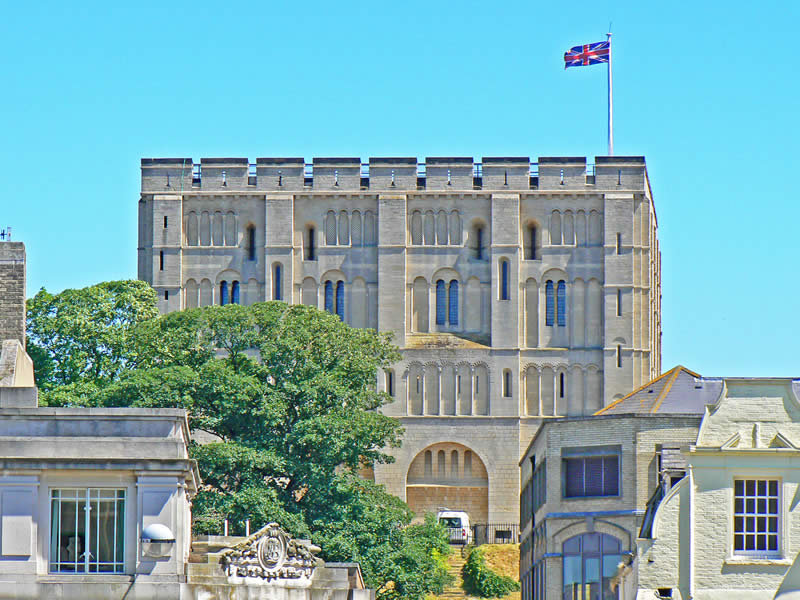
Norwich Castle |
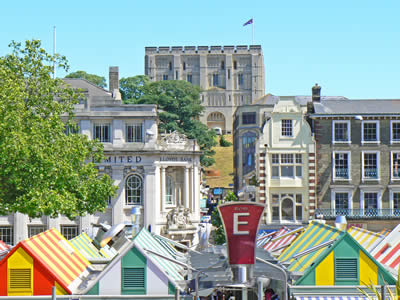
Norwich Castle as seen from the Market |
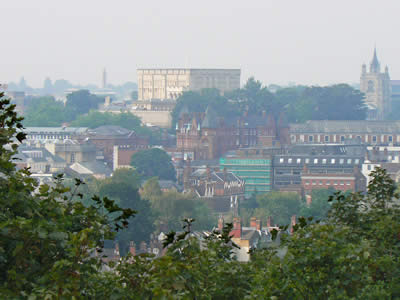
Norwich Castle as seen from Mousehold Heath |
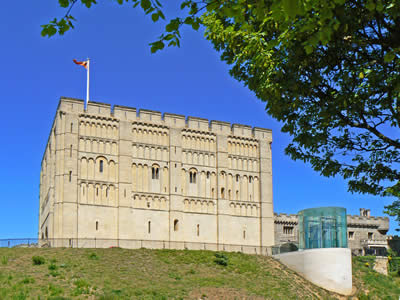
Norwich Castle on the top of its grassy mound |
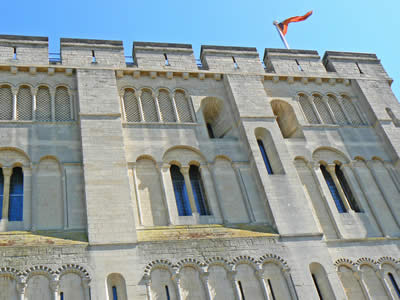
Norwich Castle Walls |
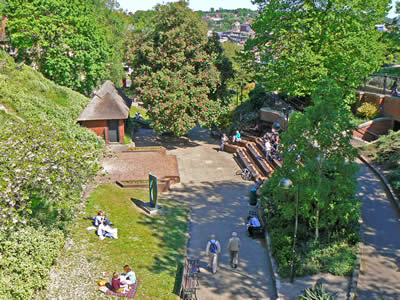
Norwich Castle Gardens |
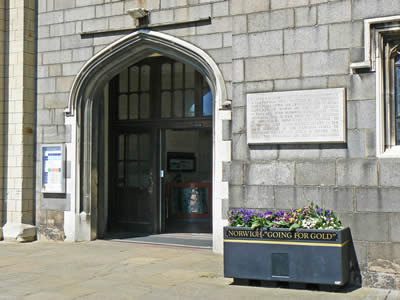
The Entrance to Norwich Castle |
Within the Keep is some of the best exhibits in the Castle Museum; with displays coming together to recreate the colourful history of this Castle. On your left as you enter you will see old implements of torture and hanging. These are artefacts from the prison life of the Keep, which was used as a gaol for over 500 years. At the rear there are magnificent displays of armour, and State silver. In the Keep you will also find a display of archaeological discoveries found nearby, when the site for the adjacent Castle Shopping Mall was excavated. |
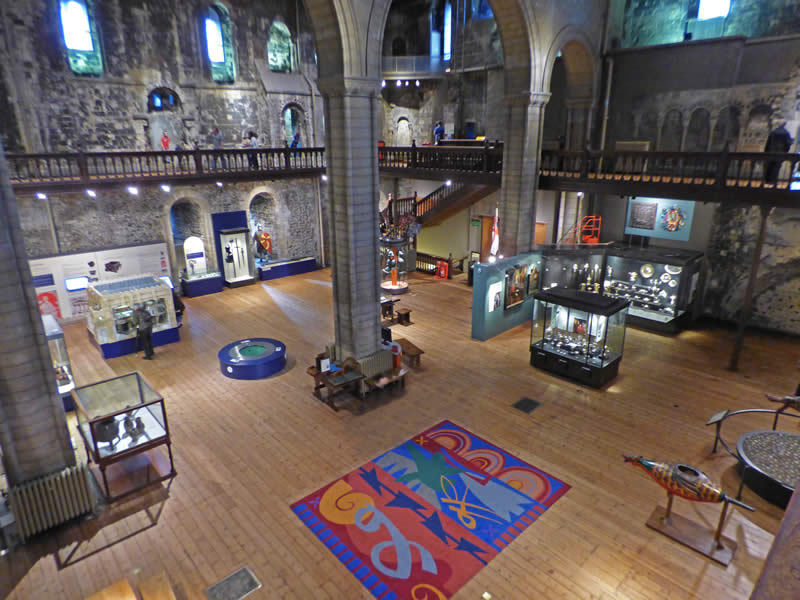
Inside the Keep of Norwich Castle |
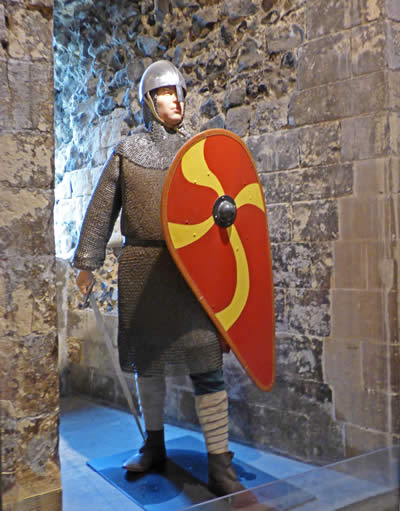
A medieval soldier as displayed in the Keep |
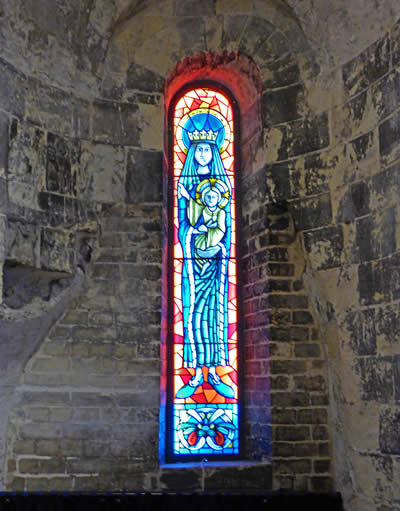
A stained glass window in one corner of the Keep |
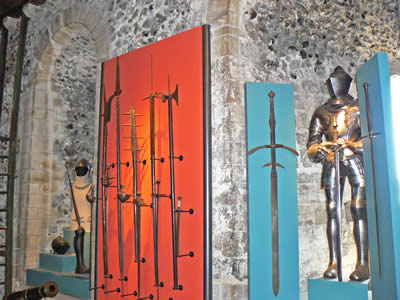
A Knight and medieval military hardware |
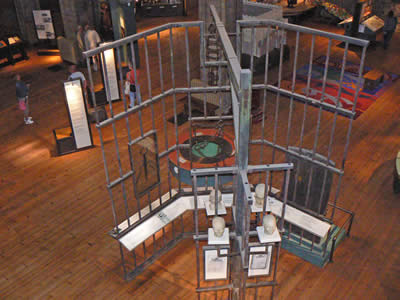
Gruesome death masks on display |
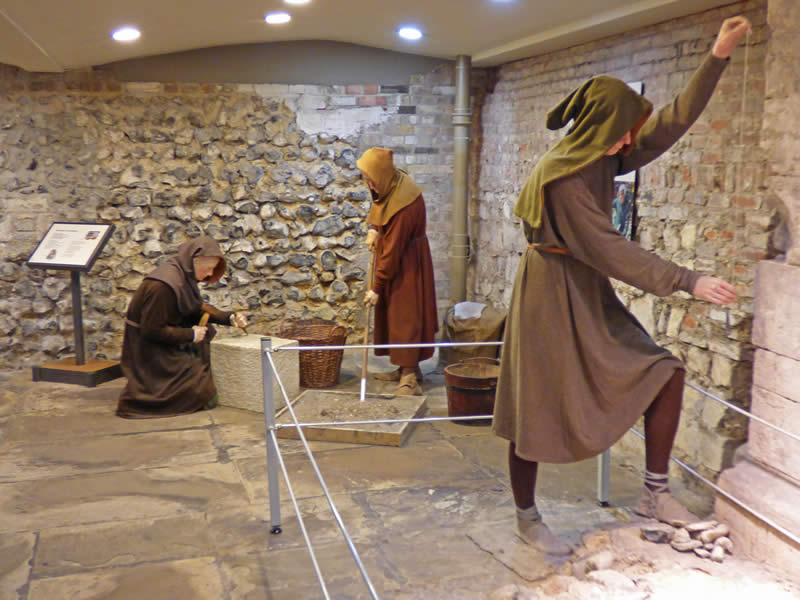
The "Building Norwich Castle" exhibition in the basement |
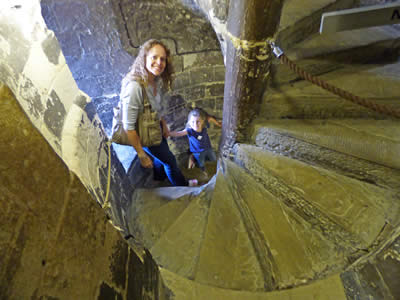
Stone staircase taking visitors to the basement |
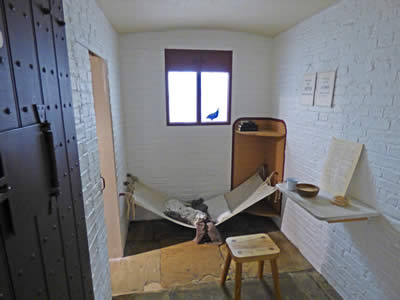
A Prison Cell in the Basement |
Norwich Castle was used for many executions, but the most famous was of Robert Kett in 1549. Kett led an army of 20,000 rebels complaining about unfair enclosures of common land by corrupt landowners. Kett laid siege to the City of Norwich in July 1549, but was eventually captured, and tried in London. He was brought back to Norwich where he was executed by hanging from the castle – his body was left to rot as a warning to others. |
Norwich Castle has one of the best collections of Anglo Saxon and Viking material in the country. Other galleries in the museum include the Boudica Gallery, the Egyptian Gallery, the Natural History Gallery and the magnificent Art Galleries. |
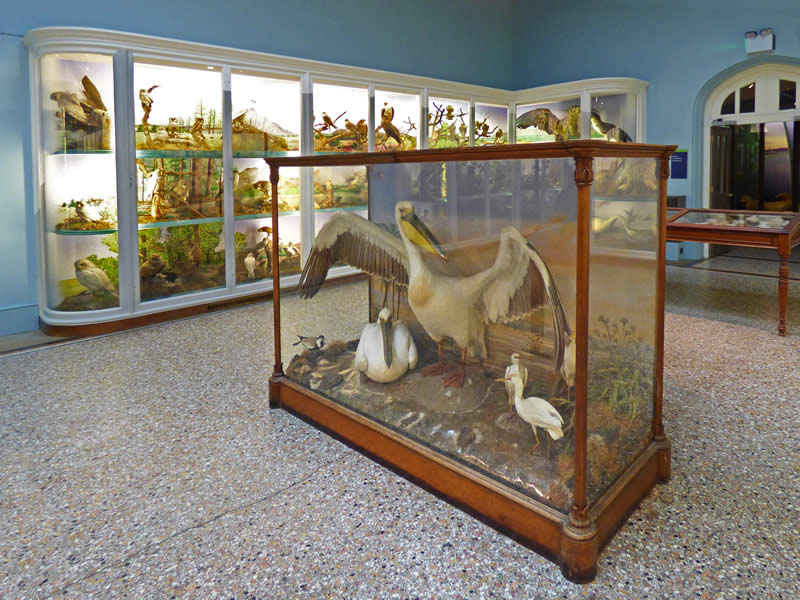
Part of the Natural History Gallery at the Castle |
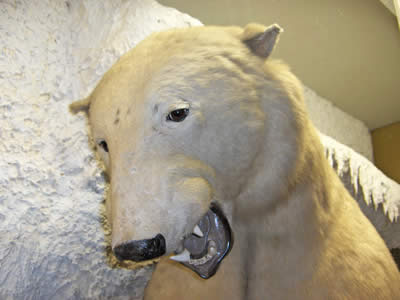
A Polar Bear shot in Spitzbergen in the 1890's |
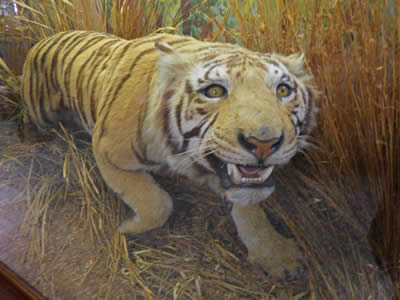
A Tiger in the Natural History Gallery |
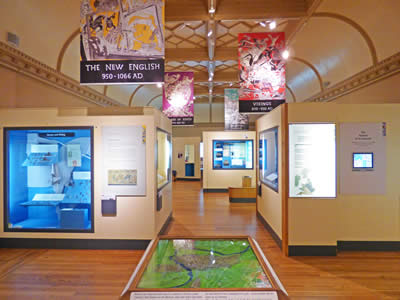
The Anglo Saxon and Viking Gallery |
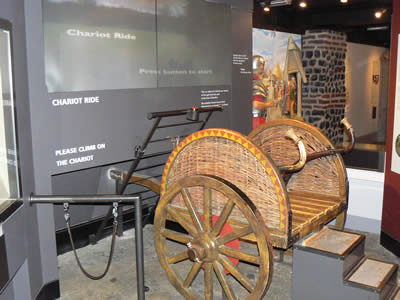
Boudica War Chariot Ride |
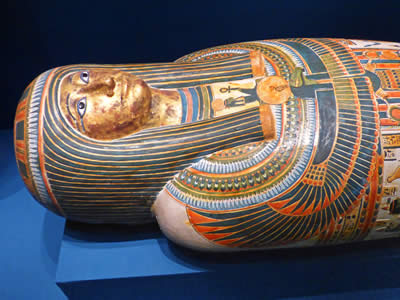
A Mummy in the Egyptian Gallery |
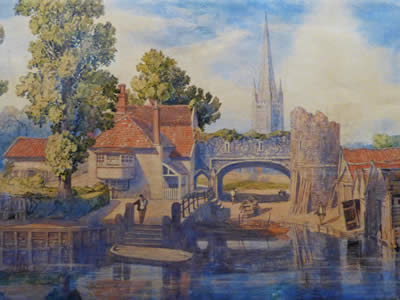
A painting of Pulls Ferry in the Art Gallery |
The Royal Norfolk Regimental Museum tells the story of Norfolk’s soldiers and their families in shaping three centuries of global history. You will see displays of equipment, as well as souvenirs and memorabilia brought back by soldiers from their campaigns – a valuable and intriguing insight into the history of life in the ranks. From their service in many countries, troops returned home with some fascinating items, here themed and arranged chronologically. |
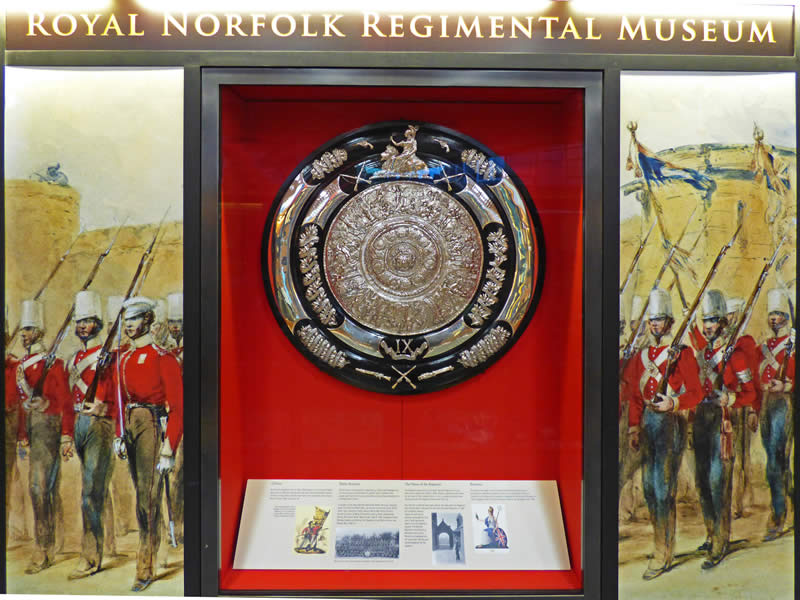
The Royal Norfolk Regimental Museum (access via the Castle Rotunda) |
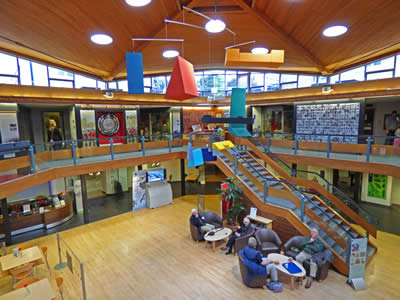
The Rotunda at the heart of the Norwich Castle |
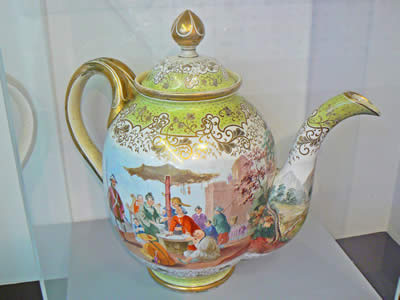
The world's largest teapot in the Rotunda |
|
|

